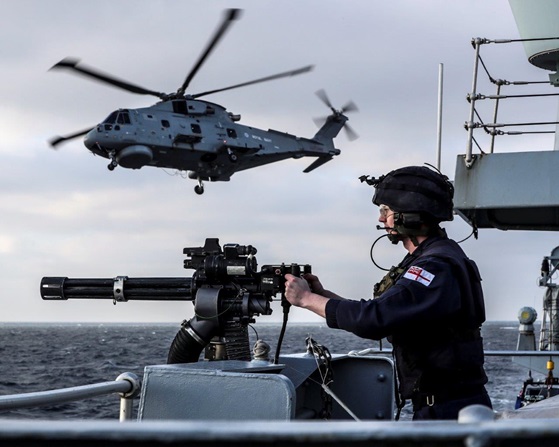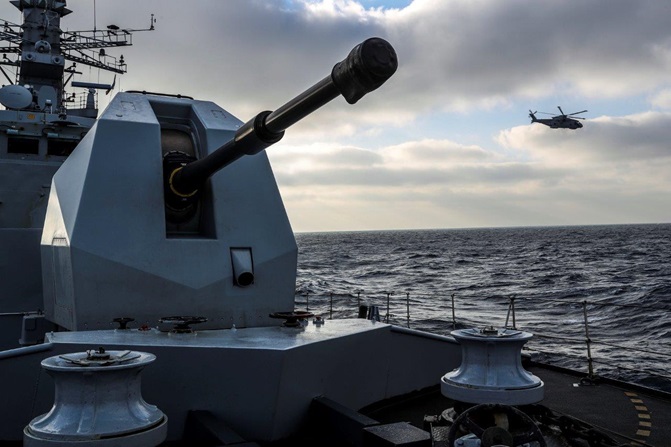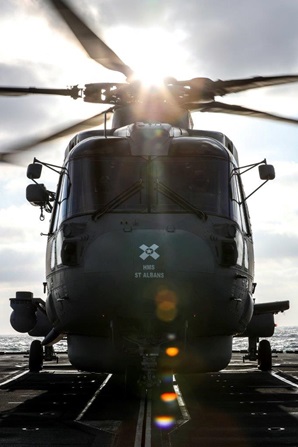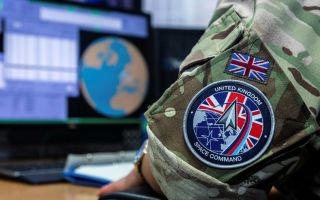
Navy Pilots Maintain Their 'Edge' With HMS St Albans Landings

A helicopter alongside HMS St Albans (Picture: Royal Navy).
Royal Navy helicopter pilots have been conducting what are some of the toughest landings on the back of HMS St Albans, according to the vessel's Flight Commander.
The Portsmouth-based Type 23 frigate has been practising her ability to guide a range of Naval helicopters on to her flight deck.
Wildcat and Merlin helicopters from 814, 815 and 846 Naval Air Squadron landed on the frigate as she protects UK waters.
Due to unpredictable conditions at sea and the size of the helicopters - in particular, the large Merlin - and the ship's deck, this is one of the toughest landings to execute, according to St Albans’ Flight Commander, Lieutenant Commander Andrew Mitchell.

HMS St Albans Commanding Officer, Commander John Cromie, said: “It’s vitally important that we practice these skillsets to maintain our edge.
“The teams from the ship’s company and the various Naval Air Squadrons have worked hard to achieve safe and meaningful aviation training over the past few days.
“These are perishable skills that need to be practiced often but in the right conditions.”
In the darkness, Wildcat and Merlin Mk3 helicopters used night vision googles to carefully land on the back of the frigate.

A Merlin Mk2 also landed in on a conventional night approach.
Around 20 aircrew from three different aircraft visited the Type 23 over three days as HMS St Albans conducted essential training while on national tasking duties.
It is HMS St Albans' responsibility to keep a watchful eye on UK waters and has also been focused on escorting a Russian warship through the English Channel.
She was recently deployed to shadow Slava-class cruiser Marshall Ustinov as she passed through UK waters.









